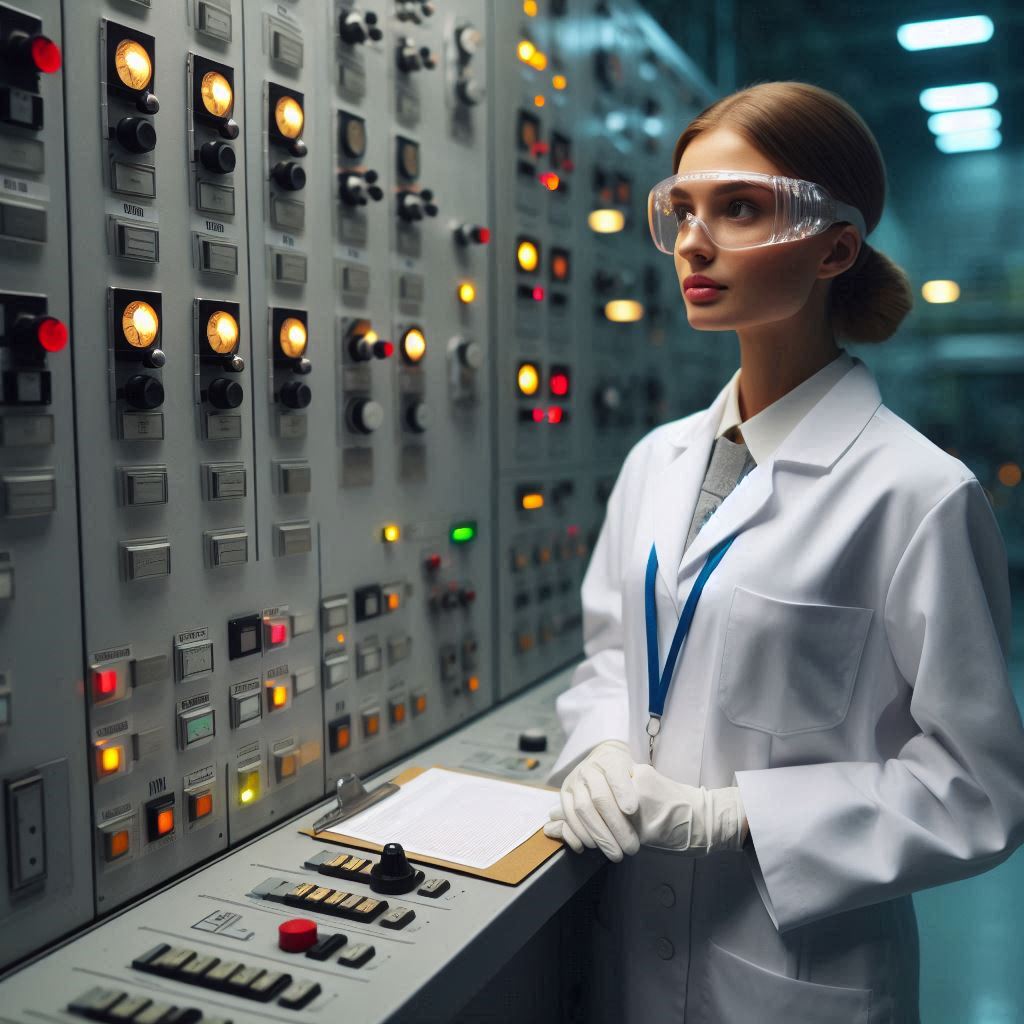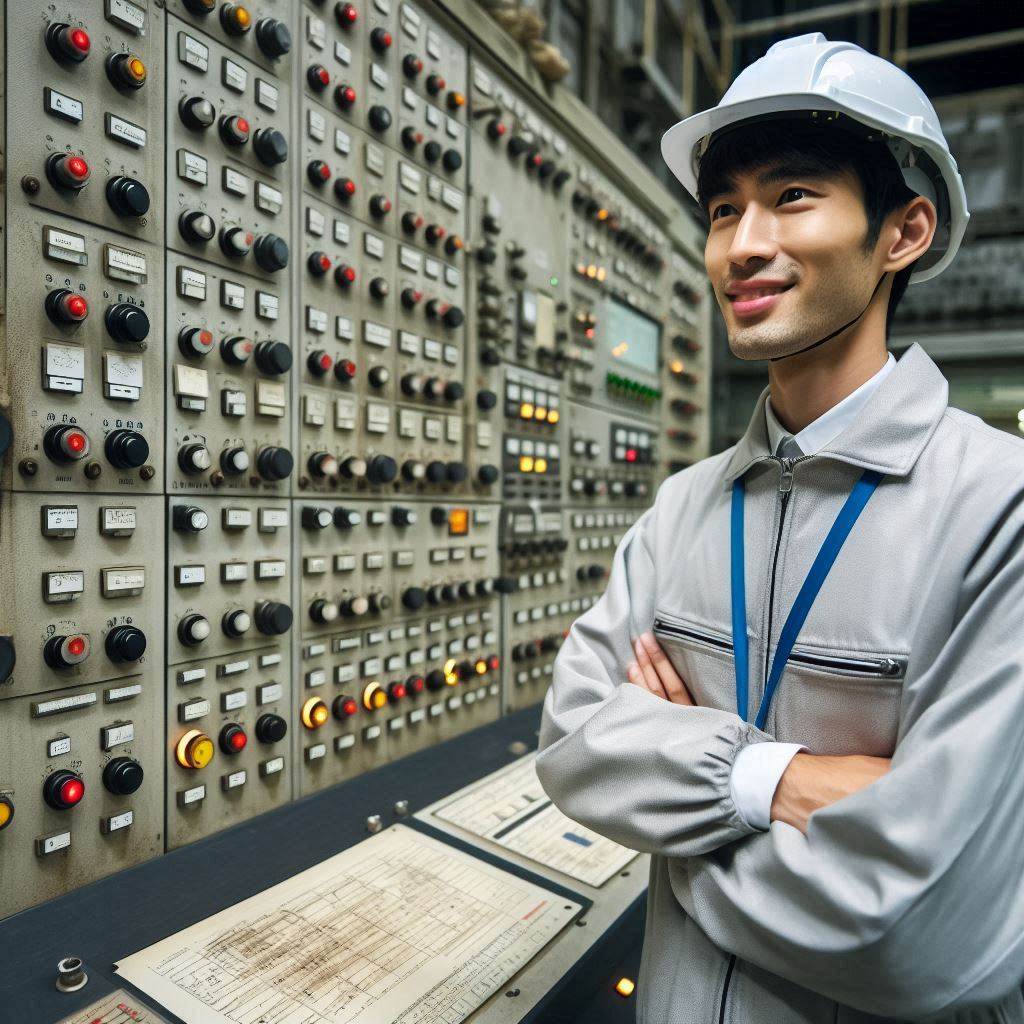Introduction
Nuclear engineers play a crucial role in today‘s society.
They design and maintain nuclear power systems that generate substantial energy.
Their work supports electricity generation, medical treatments, and research advancements.
As the demand for clean energy increases, their expertise becomes more critical.
However, nuclear engineers face several key challenges in their field.
Safety remains a primary concern.
Ensuring the safe operation of nuclear reactors and managing radioactive waste is vital.
Engineers must develop systems that prevent accidents and protect both people and the environment.
Another significant challenge is regulatory compliance.
Nuclear power plants must adhere to strict regulations and standards.
Navigating these complex requirements can be demanding and time-consuming.
Engineers must stay updated with evolving regulations and integrate them into their designs.
Additionally, public perception poses a challenge.
Nuclear energy often faces skepticism and resistance from the public due to safety fears and past incidents.
Engineers must work to improve transparency and communicate the benefits and safety measures of nuclear power effectively.
Technological advancements also present challenges.
Engineers need to continually adapt to new technologies and integrate them into existing systems.
This includes developing more efficient reactors and exploring advanced nuclear technologies like fusion.
Aging infrastructure
Challenges of Maintaining and Upgrading Existing Nuclear Power Plants
Maintaining and upgrading existing nuclear power plants poses significant challenges.
Many plants use outdated technology and equipment, which can lead to safety concerns.
Aging reactors require constant monitoring and maintenance to ensure they operate safely.
Upgrading these facilities involves complex and costly procedures.
Addressing the issue of outdated technology is critical.
Older plants often have legacy systems that are less efficient and more prone to failure.
Modernizing these systems requires substantial investment and technical expertise.
It also involves navigating regulatory hurdles and ensuring that updates meet stringent safety standards.
Issue of Outdated Technology and Equipment in Older Facilities
Outdated technology in older nuclear power plants creates additional challenges.
Many facilities use aging components that may not meet current safety and efficiency standards.
Upgrading these components is crucial to enhance performance and reduce risks.
Modern reactors incorporate advanced safety features that older plants lack.
These advancements include improved containment systems and automated safety protocols.
Retrofitting older plants with such technologies can be difficult and expensive, but it is essential for maintaining safety.
Read: Top Cities for Electrical Engineering Jobs in America
Safety Regulations
Stringent Safety Regulations That Nuclear Engineers Must Adhere To
The nuclear industry operates under some of the most stringent safety regulations in any field.
Engineers must follow rigorous protocols designed to prevent accidents and manage risks effectively.
National and international bodies set these standards, which include detailed guidelines on reactor design, operation, and maintenance.
Compliance with these regulations ensures that every aspect of nuclear power generation is scrutinized for safety.
Complexities of Ensuring the Safety of Nuclear Power Plants and Facilities
Ensuring the safety of nuclear power plants involves managing complex systems and multiple layers of protection.
Modern reactors are engineered with advanced safety features that include redundant cooling systems and containment structures.
Engineers continuously monitor reactor conditions using sophisticated technology to detect any anomalies.
Additionally, regular safety drills and emergency response plans are integral parts of the safety framework.
Chernobyl’s explosion in 1986 released massive amounts of radioactive material into the environment.
The aftermath included widespread contamination and severe health impacts.
Fukushima’s 2011 disaster, triggered by a massive earthquake and tsunami, led to significant radioactive leaks.
Both events have been ingrained in the public‘s memory, reinforcing negative perceptions.
Read: From Intern to Lead: Climbing the Software Ladder in the US
Public perception
Negative Public Perception Surrounding Nuclear Energy Due to Accidents Like Chernobyl and Fukushima
Nuclear energy faces intense scrutiny and skepticism due to major accidents like Chernobyl and Fukushima.
The Chernobyl disaster in 1986 released vast amounts of radioactive material into the environment.
This catastrophic event led to severe contamination and long-lasting health issues for nearby communities.
It also ignited widespread fear and distrust toward nuclear power.
Similarly, the Fukushima Daiichi disaster in 2011, triggered by a massive earthquake and tsunami, exacerbated public fears.
The plant’s failure resulted in significant radioactive leaks, causing extensive environmental and health concerns.
The images of damaged reactors and displaced populations deepened the negative public perception of nuclear energy.
These accidents have left a lasting impression, making many people wary of nuclear power.
The association of nuclear energy with such high-profile disasters contributes to ongoing anxiety about safety.
The negative perception of nuclear energy is a significant hurdle for the industry, impacting its growth and acceptance.
Challenge of Overcoming Misconceptions and Building Trust in Nuclear Technology
Overcoming misconceptions about nuclear energy requires a multi-faceted approach.
Effective communication is crucial in addressing public fears.
The industry must highlight the substantial safety advancements made since Chernobyl and Fukushima.
Modern reactors are built with advanced safety features, including robust containment systems and multiple fail-safes.
Educational campaigns can play a key role in shifting public perceptions.
Providing accurate information about nuclear energy‘s benefits, such as its low carbon emissions and reliability, is essential.
Comparing nuclear power to other energy sources can help illustrate its advantages.
For instance, nuclear energy often presents a cleaner alternative to fossil fuels, reducing greenhouse gas emissions.
Building trust also demands transparency and openness from the nuclear industry.
Engaging with the public through community meetings, open forums, and informational sessions can help foster understanding.
Showing a commitment to safety and environmental stewardship is vital for rebuilding confidence.
Read: The Journey: How to Become an Architect in the USA.

Waste management
Challenges of Handling and Disposing of Radioactive Waste
- Radioactive waste poses a significant threat to human health and the environment.
- The handling of radioactive waste requires stringent safety protocols to prevent exposure.
- Transportation of radioactive waste can be risky and requires specialized containers.
- Storage of radioactive waste is a long-term commitment, as some isotopes have long half-lives.
- There is a lack of consensus on the best methods for treating and disposing of radioactive waste.
Environmental Impact of Nuclear Waste
- Nuclear waste can contaminate soil, water sources, and air if not managed properly.
- Leakage of radioactive materials from storage facilities can have far-reaching environmental consequences.
- The persistence of radioactive isotopes can lead to long-term environmental damage.
- Improper disposal of nuclear waste can result in bioaccumulation in the food chain.
- Nuclear accidents, such as the Chernobyl and Fukushima disasters, highlight the environmental risks of nuclear waste.
Read: Exploring Architect Salary Trends: USA Analysis.
You Might Also Like: Lab Technician Professional Organizations
Cost constraints
Addressing financial challenges in implementing new projects
Nuclear engineers are often tasked with designing and constructing new nuclear power plants or making improvements to existing ones.
This process involves a significant financial investment, from conducting feasibility studies to obtaining permits and approvals, to procurement of materials and equipment, to construction and commissioning.
One of the major challenges faced by nuclear engineers is securing funding for these projects.
The high capital costs involved in building a nuclear power plant can be a deterrent for investors and financing institutions.
This is due to the long lead times, regulatory hurdles, and perceived risks associated with nuclear energy.
Additionally, cost overruns and delays in project completion can further exacerbate the financial challenges faced by nuclear engineers.
Unforeseen technical difficulties, changes in regulatory requirements, and supply chain disruptions can all contribute to increased project costs.
The high costs associated with building and operating nuclear power plants
Building a nuclear power plant is a complex and resource-intensive process that requires a substantial financial outlay.
The costs associated with site selection, design and engineering, licensing, construction, and commissioning can add up quickly.
Moreover, the operational costs of running a nuclear power plant are also significant.
These include expenses related to fuel procurement, maintenance and repairs, safety and security measures, waste management, and decommissioning.
Additionally, regulatory compliance and insurance costs further add to the financial burden.
The need for continuous investment in research and development to enhance safety, efficiency, and sustainability also contributes to the high costs of operating nuclear power plants.
This constant need for innovation and improvement is essential to address emerging challenges and ensure the long-term viability of nuclear energy as a clean and reliable power source.
Gain More Insights: Networking Tips for Environmental Engineering Professionals
Supply chain disruptions
The Impact of Supply Chain Disruptions on the Nuclear Industry
Supply chain disruptions significantly impact the nuclear industry.
They affect various aspects, from the sourcing of materials to the availability of components essential for nuclear projects.
Understanding these impacts is crucial for maintaining the efficiency and safety of nuclear operations.
Challenges of Sourcing Materials and Components for Nuclear Projects
The nuclear industry faces several challenges in sourcing materials and components.
Key among these challenges is the procurement of uranium.
Uranium is a critical resource for nuclear fuel, and its supply is influenced by geopolitical factors and market fluctuations.
Any disruption in the uranium supply chain can lead to increased costs and delays in fuel procurement.
This directly impacts reactor operations and scheduling.
Obtaining reactor components also presents challenges.
Components like control rods, coolant pumps, and steam generators are highly specialized and often custom-made.
The manufacturing of these components requires precision and has long lead times.
Disruptions in the supply chain for these parts can delay construction and maintenance of nuclear facilities.
These delays can be costly and impact the overall project timeline.
Conclusion
Nuclear engineers face several key challenges that impact the future of nuclear energy.
Ensuring safety remains a top priority.
Advances in reactor design and safety protocols are critical to prevent accidents and protect the public.
Waste management presents another significant issue.
Developing long-term storage solutions and reducing radioactive waste is essential for sustainability.
The high cost of nuclear plant construction and maintenance also poses a challenge.
Engineers must find ways to reduce costs while maintaining safety and efficiency.
Public perception and regulatory hurdles further complicate the field.
Effective communication and transparent regulations can help build public trust and streamline processes.
Addressing cybersecurity threats is increasingly important.
As technology advances, nuclear facilities must guard against cyberattacks to prevent potential disruptions or damage.
Engineers must continually update their knowledge and technology to stay ahead of evolving threats.
The integration of nuclear power with renewable energy sources presents both opportunities and challenges.
Engineers must develop hybrid systems that can efficiently complement renewable energy while addressing the inherent risks of nuclear power.
[E-Books for Sale]
The Big Book of 500 High-Paying Jobs in America: Unlock Your Earning Potential
$19.99 • 500 High-Paying Jobs • 330 pages
Explore 500 high-paying jobs in America and learn how to boost your career, earn more, and achieve success!
See All 500 High-Paying Jobs of this E-Book
1001 Professions Without a Degree: High-Paying American Jobs You Can Start Now
$19.99 • 1001 Professions Without a Degree • 174 pages
Discover 1001 high-paying jobs without a degree! Unlock career tips, skills, and success strategies for just $19.99!




